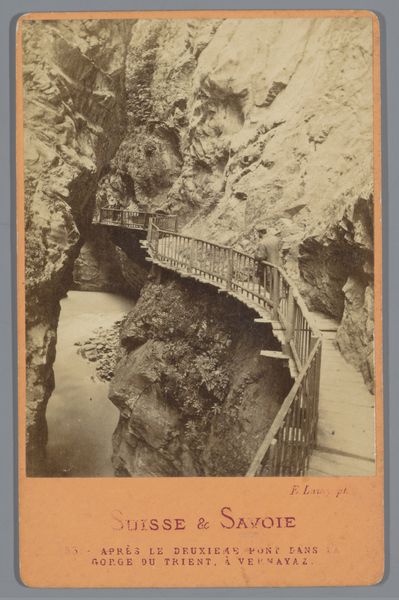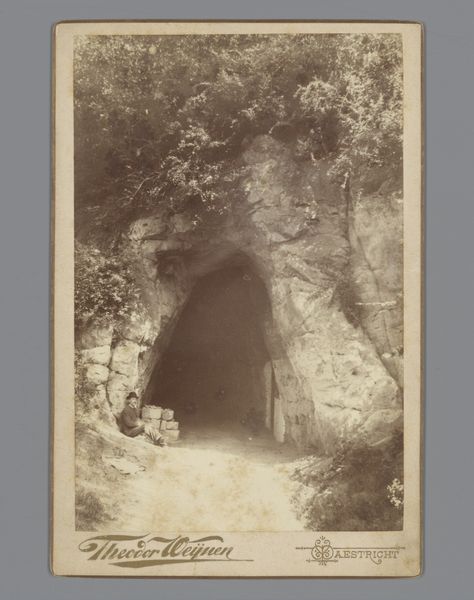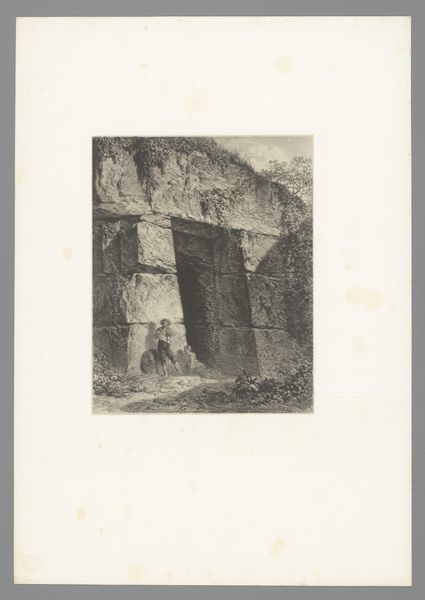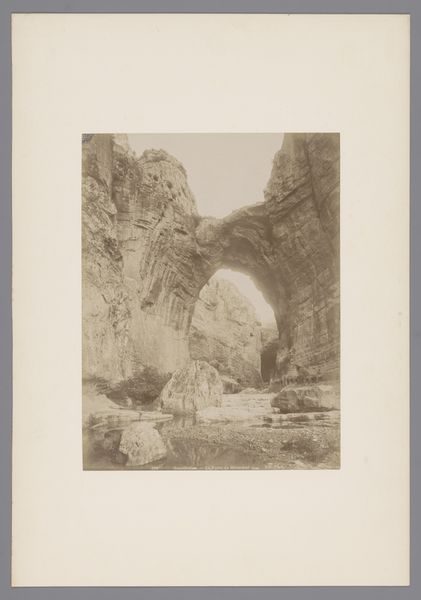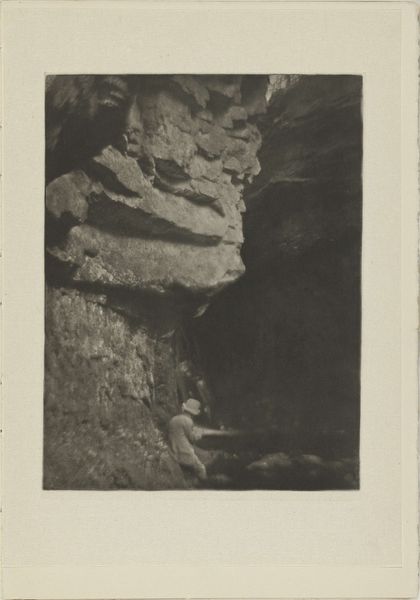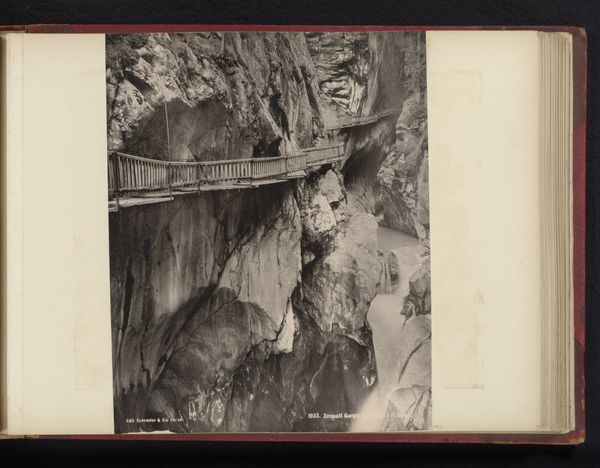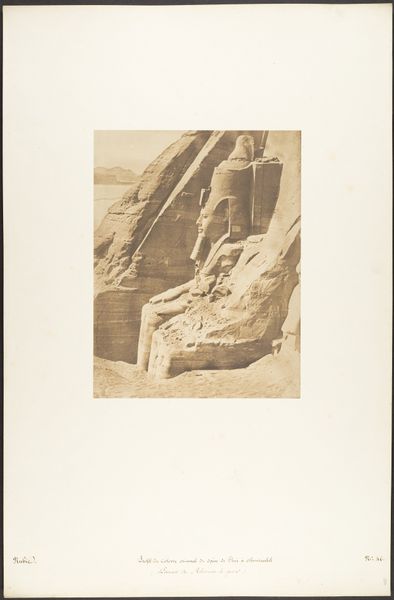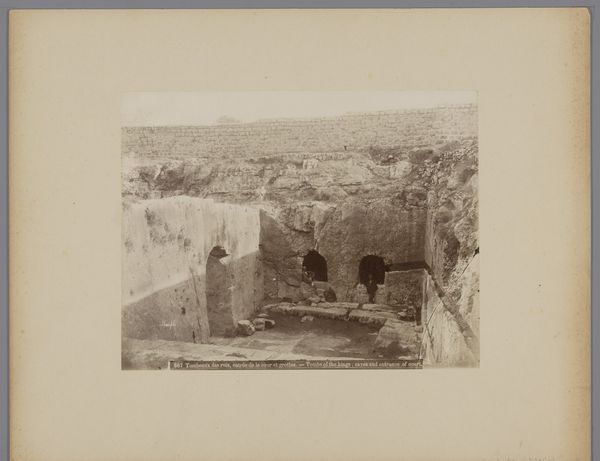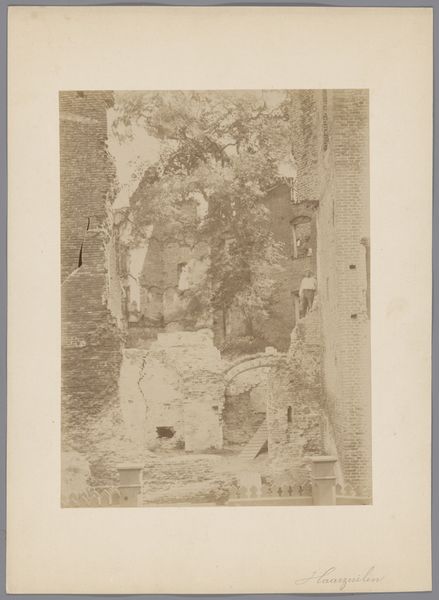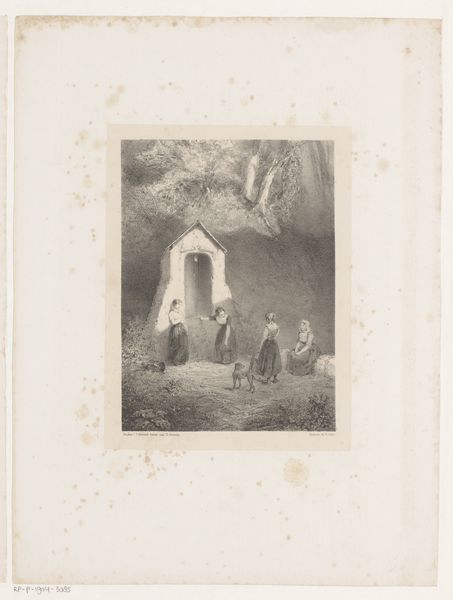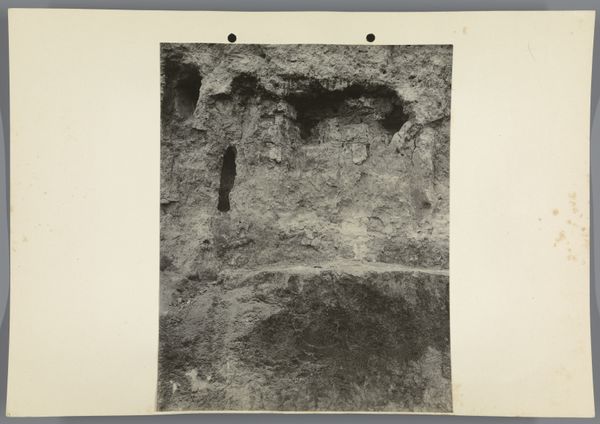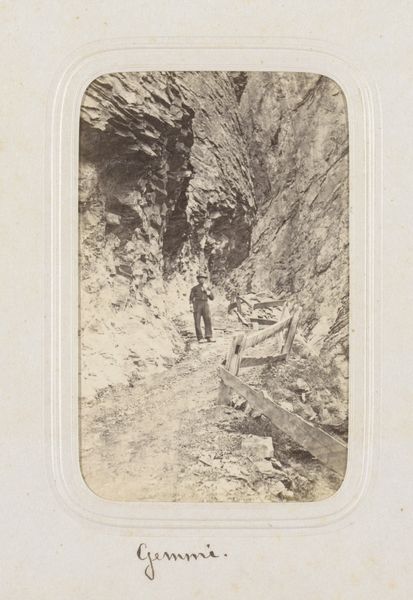
Toeristen bij de ingang van grot Kohlscheuer bij Echternach, Luxemburg 1890 - 1910
0:00
0:00
photography, gelatin-silver-print
#
portrait
#
pictorialism
#
landscape
#
photography
#
group-portraits
#
gelatin-silver-print
#
genre-painting
Dimensions: height 268 mm, width 209 mm
Copyright: Rijks Museum: Open Domain
Editor: This gelatin-silver print, taken sometime between 1890 and 1910 by Henri van den Broeck, is titled "Tourists at the entrance of the Kohlscheuer cave near Echternach, Luxembourg". It's fascinating to see these figures posed against such a rugged, natural backdrop. What symbolic weight do you find embedded within this particular setting? Curator: The cave itself is profoundly symbolic. Across cultures and throughout history, caves have represented the unconscious, the unknown, a place of initiation and transformation. Consider the group of figures juxtaposed against this cavernous space – they stand at a threshold. Editor: A threshold between what? The familiar and the unfamiliar? Curator: Precisely! And also, perhaps, between a world increasingly shaped by modernity and the enduring power of the natural world. Notice how their attire suggests a certain formality, a 'Sunday best', amidst this primal setting. The stark contrast speaks volumes about humanity's perceived relationship with nature at the time. Are they conquering or merely observing? Editor: It's interesting you mention "conquering," because the man standing on the rock looks like he's posing, as if claiming it somehow. Do you think that's a deliberate gesture captured by Van den Broeck? Curator: I believe so. The pose isn't accidental; it's performative. It underscores the human impulse to assert dominion, to imprint oneself onto the landscape. But the cave remains, doesn't it? Constant, enduring. What is it saying about how we interact with places? Editor: I'm struck by how this photo captures not just a moment in time, but also layers of cultural assumptions and unspoken narratives about humanity and nature. Curator: Exactly. This is why it still speaks to us today. It isn’t just a picture of some tourists, it’s about our continuing dialogue with the environment and how that defines who we are, both then and now.
Comments
No comments
Be the first to comment and join the conversation on the ultimate creative platform.
